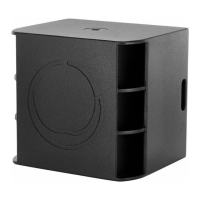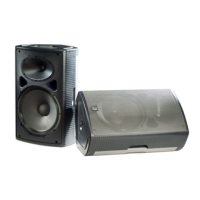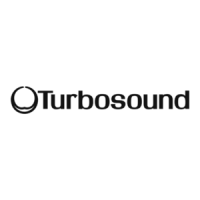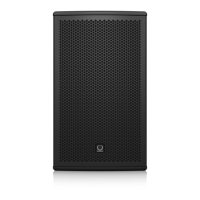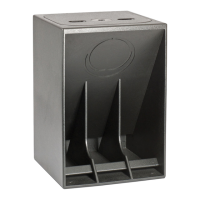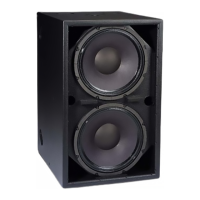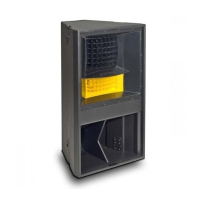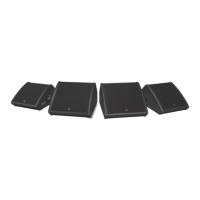16 Manchester Series MAN210-FG/MS121/MV210-HC Quick Start Guide 17
DISTANCE EQCOMPENSATION OVERLAY
All speakers are aected by air loss over distance; this set
of overlays is in increments of 3 m, and ensures a balanced
high frequency response over distance. Peaking or Bell
lters are used to keep headroom in the high frequency
band rather than high shelf lters which unnecessarily
use up headroom for frequency which will not travel over
fardistances.
Rules of AirEQ:
DO NOT INSERT MORE THAN 1 FILTER AT THE SAMETIME.
FOR INTERMEDIATE DISTANCES, USE THE CLOSEST
OVERLAYAVAILABLE
AirEQ overlays are availableat: 9 m, 12 m, 15 m, 18 m, 21 m,
24 m, 27 m, 40 m, 50 m, and + 50m
Below are some examples of how the useful frequency and
gain changes overdistance:
AirEQ 12 m
AirEQ 15 m
AirEQ 18 m
AirEQ 21 m
Two elements per amplifier DSP module block
AirEQ12 m – For elements within an array aimed at
12 mdistance
AirEQ15 m – For elements within an array aimed at
15 mdistance
AirEQ18 m – For elements within an array aimed at
18 mdistance
AirEQ21 m – For elements within an array aimed at
21mdistance
EQ STRATEGY: Considerations for consistant frequency response in the soundeld
Flat arrays (minimium inter-element angle between
elements) will have an increase in the mid frequency band
typically between 630 Hz -2kHz
Flat Array
Low Frequencies Mid Frequencies
Boost in Mid Energy
due to physical coupling
Flat Array Frequency Response
High Frequencies
Curved array (inter-element angle used between elements)
will have decrease in the mid frequency band typically
between 630 Hz -2kHz
Curved Array
Low Frequencies Mid Frequencies
Cut in Mid Energy
due to physical de-coupling
Curved Array Frequency Response
High Frequencies
It is recommended that you split the EQ strategy to suit
the mechanical curvature of the array, to gain consistant
frequency response.
Example: Here we have a typical J curved array of 8
MV210-HC elements – as we have 2 MV210-HC elements
per Lake DSP module, it gives 4 discrete ZONEs that can have
small adjustments in the mid band area that is aected
by the mechanical aiming of the array causing coupling
andde-coupling.
Using one of the many industry-standard measurement
software systems, reference microphones and sound-cards,
nd the mid range frequency aected, and adjust each zone
for consistant frequency response between zones / sound
eldarea.
Lake software oers integration to many of these
software systems, further information can be found at
www.labgruppen.com
Curved Array
Curved Array EQ Adjustments
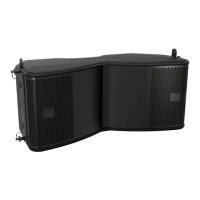
